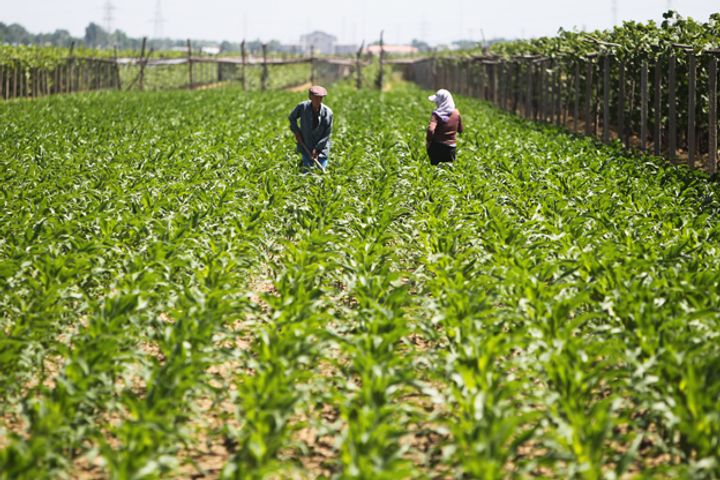 Census Shows Rustic Shanghai's Drastic Changes Over a Decade
Census Shows Rustic Shanghai's Drastic Changes Over a Decade(Yicai Global) Jan. 17 -- The overall caliber of Shanghai's farming population and agricultural mechanization have improved considerably over the last decade, as have the municipality's rural residents' living conditions, a report the Shanghai government recently released shows.
The city's farming population has a balanced gender ratio that has dipped over 10 years. This yeomanry, which boasts better education than 10 years ago, is aging at a swifter rate, per the city's third agricultural census the Shanghai Leading Group for the Third Agricultural Census, Shanghai Municipal Bureau of Statistics and Shanghai's branch of the National Bureau of Statistics jointly conducted.
The country organized the census to harvest the latest information on its bucolic districts and their farmers. Some 22,000 local officials visited over 700,000 Shanghai farmsteads to glean data on the municipality's agrarian sector. The last census took place 10 years ago.
Education expands as the countryside ages
Shanghai has about 530,000 farmers (those employed in agriculture and related activities) -- a mere 2.2 percent of the megacity's permanent residents. More than 60 percent are over 55, with fewer than 30,000 under 35. About 90 percent of these agriculturalists raise crops. The rest work in forestry, animal husbandry and fisheries.
The number with a junior middle-school education rose 7 percentage points compared with the 2006 findings. The ranks of the senior-high schooled climbed 5.5 percentage points, while those with college education or above scaled up 3 percentage points.
Automation activates, raises living standards
Farm mechanization has also greatly improved in decade, with the city's fleets of tractors and combine harvesters rising by 22 percent and 55 percent, respectively, and with the overall area enclosed as greenhouses, nurseries and indoor aquaculture facilities similarly actively growing.
The scale of individual agricultural businesses has also consistently shot up, doubling to 5,700, of which more than half are farm cooperatives.
City villages likewise enjoy better infrastructure. Hamlets with road access now total 100 percent, up from 99 percent 10 years ago, and 84 percent have street lights, as against 35 percent in 2006.
Living conditions in rural Shanghai have attained a new high, with 99 percent of farmers having built their own house in a nmarked increase from 10 years ago. About 9 percent of homes are reinforced concrete, up from 2.5 percent in 2006. About 89 percent of farmers now live in brick-concrete houses, over against 70 percent in 2006.
Purified water is on-tap in 99.9 percent of farmer families, and the percentage of households with flush toilets has leapt to 99 percent from 72 percent. Gas, natural gas, liquefied petroleum gas and electricity provide the main energy sources for cooking and heating, whereas 10 years prior coal and charcoal mostly supplied these needs.
Average car ownership is 40 per 100 households -- a fivefold increase over 2006 -- and a figure also higher than the national average of 25 percent. Color television ownership rose by 58 percent to 188 per 100 households from 119. Computer ownership jumped to 54 from 15, and cell phone ownership to 216 from 113.